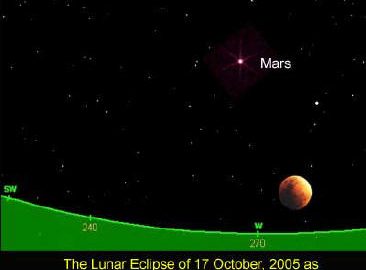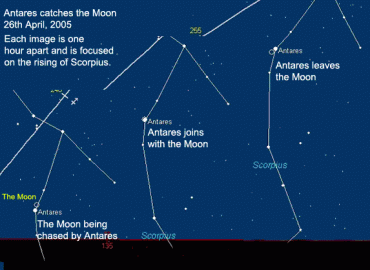Bernadette Brady
August 2005
A place and a calendar date have a relationship. Our culture does, however, tend to function more in a time-world than a place-world, with our emphasis on anniversaries and our view of history as being pinned against a gallery of years.
As astrologers we know the value and importance of place but we also show this time-bias within our astrological corpus of predicted techniques. For our methods focus more on the when and really, to be honest, they are weak on the where. Granted we do have the technique of Astro*Carto*Graphy but this method views the earth as a neutral canvas, blank and empty, waiting for a planet line to impregnate it. But is the earth truly a neutral canvas? Most people would accept that places do have an inherent quality, a tendency to produce similar events or feelings across groups of people and some of this quality, I believe, comes from a location’s relationship with the sky, the whole sky in contact with the whole line of the horizon.
This relationship between the sky and land is part of the meaning of the term “fixed” that we apply to the stars. The earth rotates on its axis and every day the whole sky, stars, planets, ecliptic, sun and moon appear to rise and set. Yet unlike the planets, the stars are fixed in their place in the dome of the sky and therefore, since the dome of the sky appears to rotate, they will, for any given place always rise in the same place on the horizon, set on the same place on the horizon, and culminate at the same degree of elevation above the horizon (see figure 1).

Figure 1 – For the observer, and ignoring the slow effect of precession, this star will always rise over the same place in the landscape, every single day of the year. As well, for any given calendar date, the star will not only rise in the same place but will also rise at the same time of the day.
They are therefore fixed in their relationship to place and calendar and do not wander around the sky, changing their times and positions of rising, setting and culmination like the planets. The stars are fixed in their relationship to place.
For example, in figure 1 the time is set to pre-dawn with the sun just below the horizon. Let us say that the calendar date is 10th June. For this location, on 10th June, the star will rise just before dawn in exactly the same place on the line of the horizon. Later in the year the star will be seen to rise at exactly the same place on the line of the horizon. The only difference is that it will be seen to rise at some other time during the night but always the time of rising will be linked to the calendar date.
Stars have two strong relationships to space;
- They will always rise and/or set touching the same place on the line of the horizon; and,
- The time in the day or night when a star is seen to rise, set or culminate is fixed to a particular calendar date (ignoring precession).
So just as the planets are married to time, giving us timing – and indeed our calendar – so the stars are married to place. We can therefore make the simple statement that in visual astrology planets are time and stars are place and the two come together in what is known as Star Phases.
These star phases were observed and used as part of the religious calendar of the old kingdom period in Egypt where the star phases gave a pulse or beat to a place. Calendars, called parapegma, were constructed based on measuring the course of the year by the stars, the horizon line and the sun rather than our modern calendars which are based on the sun alone. (Starlight will produce a parapegma for any location for any range of dates – but that is material for another newsletter!)
Star Phases
As ecliptic-based astrology began to dominate our thinking, we lost sight of this unique relationship between the sky, sun and the land. Star phases with their place-sensitive features naturally fell from astrological use, for the knowledge of the constant celestial annual patterns of a star’s rising and setting for one location could not be used in another. Any shift in latitude will potentially change the whole relationship that a star has to a landscape.
Yet star phases are at the heart of visual astrology, for they are a star/place annual rhythm or cycle which is a vast treasure-trove of astrological information, all of which enhances the dimension of place in our horoscopic astrology. For star phases indicate a quality to a place. They can lead to insights as to how location is expressed by planetary patterns and provide information as to the quality of place and time into which individuals are born. All of these areas will be explored at different times in this newsletter but firstly let us simply look at one of these key star phase events:
The Heliacal Rising Star
The heliacal rising star was the star considered by the Egyptians to ride in the fiery boat of the sun god, Ra, and thus it was considered that this star ruled the calendar days until the next star took over the seat in the boat of the sun. Similar to Christian saint’s days of a later era, a star ruled a particular day in the year but different from the idea of a saint’s day by continuing to rule until the next star took its position.
To ride the chariot of fire a star had to do two things: it needed to rise just before the sun AND it needed to do this as it completed its journey of death into rebirth.
Firstly, the star needed to have shown its divinity by “dying”. Its death would always be at a fixed time of the year and was signalled by its disappearance from the night sky (see figure 2). The star would be “dead” and travelling in the Underworld for a few days or many months but always the length of time was the same for a given star. Then one glorious morning the star would be glimpsed again in the pre-dawn light. This was its “rebirth” and was the proof of its successful journey through the Underworld and its position as a god. The star then rode in the chariot of the sun and ruled the time period until another star completed this divine journey of death and rebirth (see figure 2).

Figure 2
It is important to realise that the heliacal rising star is not just any star rising before the sun. It must be a star rising before the sun which has not been visible for a period of time, a star which has just completed its journey through the Underworld. Any other star rising before the sun is called a “morning rising star” and was not a focus of attention.
Your Place of Birth
The place into which a person is born is flavoured by this star, sun, horizon-line relationship. The heliacal rising star contributes to the quality of the place and is, I believe, a significant background endowment to your natal chart. It is part of the soil into which your chart is seeded. But because it is a star emerging from the Underworld and becoming a god, its gifts or endowment to your chart are not concerned with the daily chatter of a busy life but rather are focused into the realm of one’s soul, one’s spiritual pathway. For this star and its ancient myths provides one with a deep sense of one’s inherent nature, one’s inherent gifts or deep-seated ancestral issues that are pushing or pulling one through life. The star has journeyed through the Underworld and is now emerging into the light not as a tabla rosa, blank and empty awaiting your life to imprint it but instead ready for you to reach into its myths to gain insight into your feelings of personal life mission and personal abilities, and gifts you have within you that you can use to complete you mission.
This can be better understood when you realise that Ludwig van Beethoven, the great composer, John Milton, one of the greatest of English poets, and Gustav Eiffel, architect of the Eiffel tower in Paris, all have Antares, the Heart of the Scorpion, as their heliacal rising star. Its meaning in Starlight is:
“To be driven by passion and obsession.”
All of them driven with an obsession which was focused in different ways. Their passion was one of their gifts. Similarly Mohandas K Gandhi and John Lennon both share Alkes as their heliacal rising star. This is the star of the chalice (Alpha star of Crater) and is delineated in Starlight as:
“To be the living vessel of a sacred body of knowledge or philosophy”.
Gandhi considered himself a vessel for the freedom of India. Lennon was the voice of society’s conscience against war and hunger. The heliacal rising star is a foundation stone underneath a natal chart, a rock on which the rest of the horoscope can stand and take shape. Never over riding a horoscope but acting like a gentle or strong hand shaping the unfolding journey of the natal chart.
Note: If you do not know your own heliacal rising star then we are happy to send you this information free of charge




